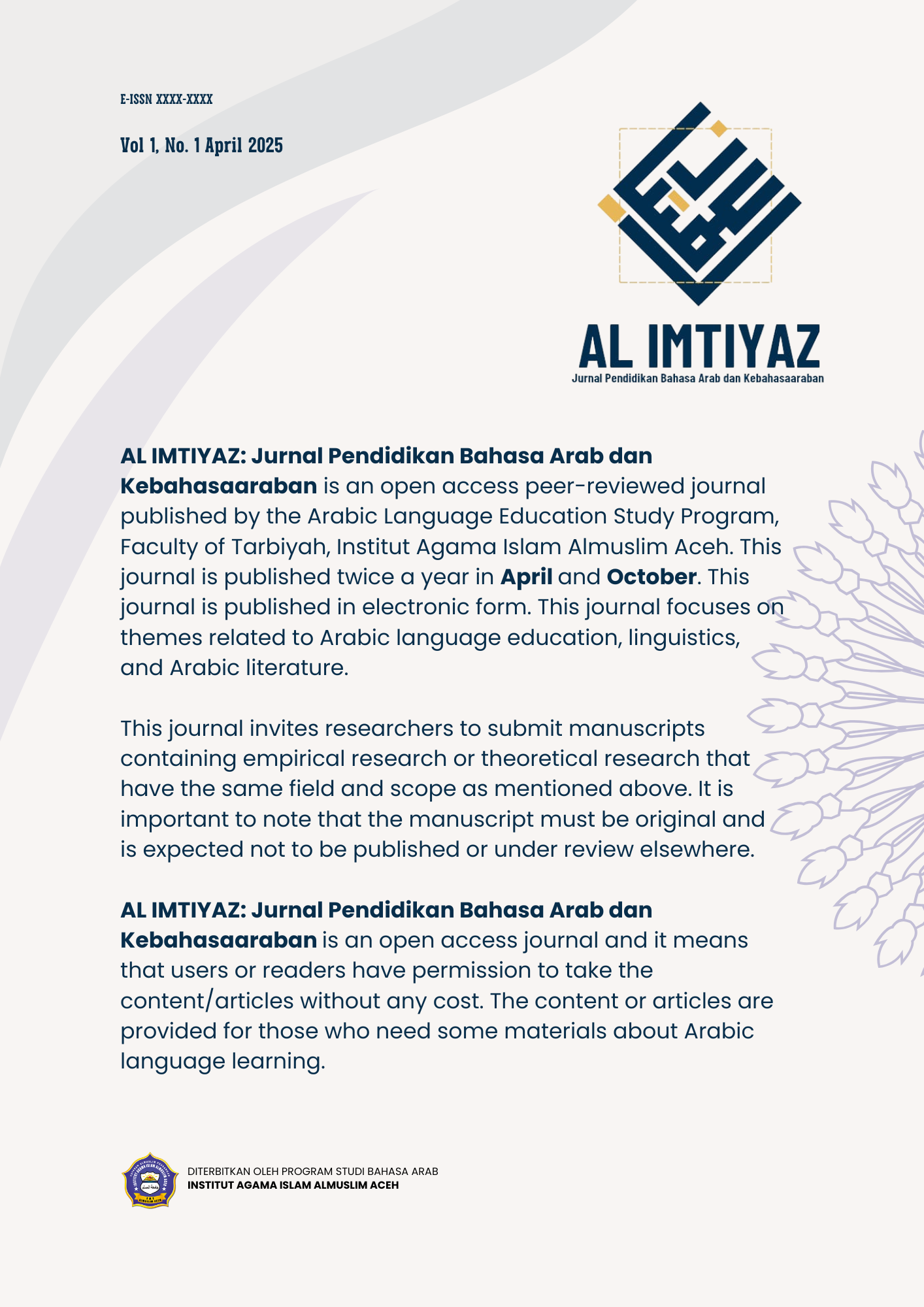Analysis of the Dimension of Text in Saidi Rais' Song by Hama Meshari Hamada (Norman Fairclough's Critical Discourse Analysis Perspective)
Keywords:
Text Dimension Analysis, Song by Saidi Rais, Norman Faiclough's AWKAbstract
This article is entitled "Analysis of the Dimension of Text in the Song of Saidi Rais by Hama Meshari Hamada (Perspective of Critical Discourse Analysis of Norman Fairclough)". The purpose of this study is to identify and analyze the elements of Representation, Relationship, and Identity from the textual dimension in Saidi Rais' song. The research approach used includes a methodological approach, namely a descriptive-analytical technique by describeing, recording, analyzing and interpreting the material studied with the perspective of Norman Fairclough's critical discourse analysis. And the results of the research show that in the element (1) Representation of the existence of vocabulary (diction) to describe or represent the existence of conflicts in the song and grammatical aspects (grammar), showing the existence of transitivity where most of the clauses are constructed in the form of active clauses (S+P + O+ Captions) and presented with sentence patterns in the form of events. (2) Relationships show the existence of a social relationship between the author of the text and the text. (3) Identity indicates that the producer of the text is in the position of the individual who is in the conflict situation.Metrics
Metrics Loading ...
Downloads
Published
30-04-2025
Issue
Section
Articles
License
Copyright (c) 2025 Putroe Suci Rahmadani, Mila Maulina, Malik Adharsyah, Nabil Akhtiyar

This work is licensed under a Creative Commons Attribution 4.0 International License.
How to Cite
Analysis of the Dimension of Text in Saidi Rais’ Song by Hama Meshari Hamada (Norman Fairclough’s Critical Discourse Analysis Perspective) (Putroe Suci Rahmadani, Mila Maulina, Malik Adharsyah, & Nabil Akhtiyar , Trans.). (2025). AL IMTIYAZ: Arabic Linguistics and International Methodology for the Tarbiyah of Arabic Journal, 3(1), 67-75. https://ejournal.iai-almuslimaceh.ac.id/index.php/IMTIYAZ/article/view/212















